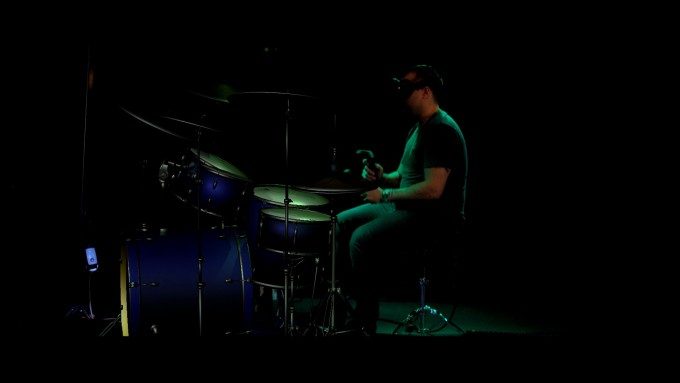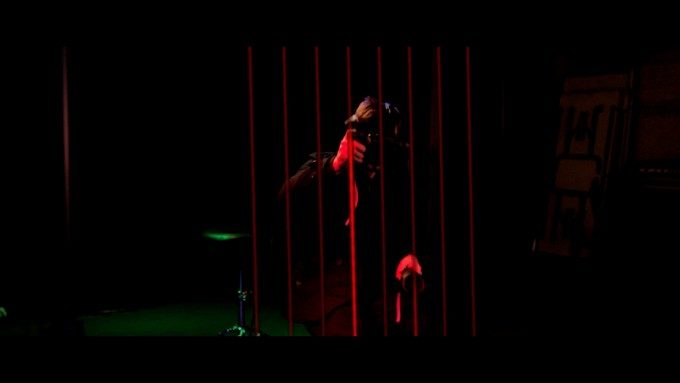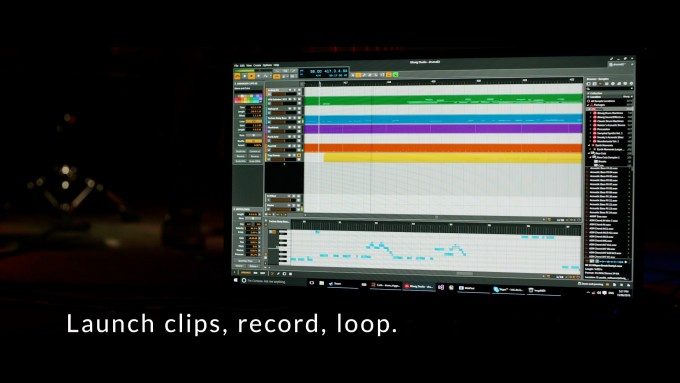Rhythm action games build around virtual reality are already a thing, but what about immersive music making? The Music Room launches in July and this impressive mixed reality demonstration shows how powerful immersive musicianship might be in virtual reality.
Launching on July 24th, The Music Room from Melbourne-based developer Chroma Coda is pitching itself as a serious music creation package for budding and professional musicians that allows artists to play instruments inside VR and sequence them to release as bonafide works of art.
As you can see in the video embedded at the top of the page, The Music Room leverages the power of hands presence through motion controllers to sit musicians in front of an array of virtual instruments, ranging from a full VR drum-kit to virtual laser harps. Built for the HTC Vive, the new package launched on Steam July 24th and is the first truly ‘serious’ immersive music creation package we’ve come across.
We say ‘serious’ as, not only will The Music Room allow artist to strum and beat non-existent instruments and produce tunes, it also ships with a copy of Bitwig, a full featured DAW (Digital Audio Workstation) to sequence any tracks created by the virtual jam sessions.
“We’ve been working on The Music Room since we first got the prototypes of the Vive and contemplating it since we got the early Morpheus prototype,” says Choma Coda Director Loki Davison, “I’ve been making synth, samplers and instruments in general for 16 years now. Once tracked controllers became available we realised we could use them to make in instrument more expressive than traditional keyboards or MPC style drum pads.”
But why VR music? Turns out there Davison has both technical and artistic limitations he’s looking to address with The Music room. “Expressive is the important word to us,” says Davison, “Traditional high end midi keyboards provide one continuous parameter per note (poly after touch ) and most provide zero. We have 6 plus note on and off velocity. What this means is that you can do vibrato, tremolo, bends and other techniques easily. This opens up new genres to electronic sounds. Want to play a blues style lead on a synth? Now you can with accurate bending and great latency and accuracy. Walk on the wild side’s distinctive bass part is easy on our laser harp.”
Putting those technical and artistic benefits aside, Davison maintains that The Music Room delivers something to musicians who don’t necessarily have access or space to play the instruments they want. “A big part of my personal reason for being excited about The Music Room is that it makes electronic instruments feel like instruments,” he says, “I like the sounds available with synths but often found playing then was more like programming than playing. I play guitar, double bass and sing and wanted that kind of feel to electronic instruments. I’m very happy that we achieve that with The Music Room.”
The excellent demonstration video certainly does a great job of bringing home how effectively artists might well just lose themselves in VR and the music thanks to the tools Chroma Coda are developing here. Thankfully the company is also aiming to package that artistic freedom with ways to actually be productive too. “We’re focusing on musicians,” Davison says, “We’re very happy to be partnering with the very best companies in the industry such as FXpansion and Bitwig. The Music Room is designed for both studio and live use.”
The Music Room will be on sale in July for $129, the price includes a copy of Bitwig.









